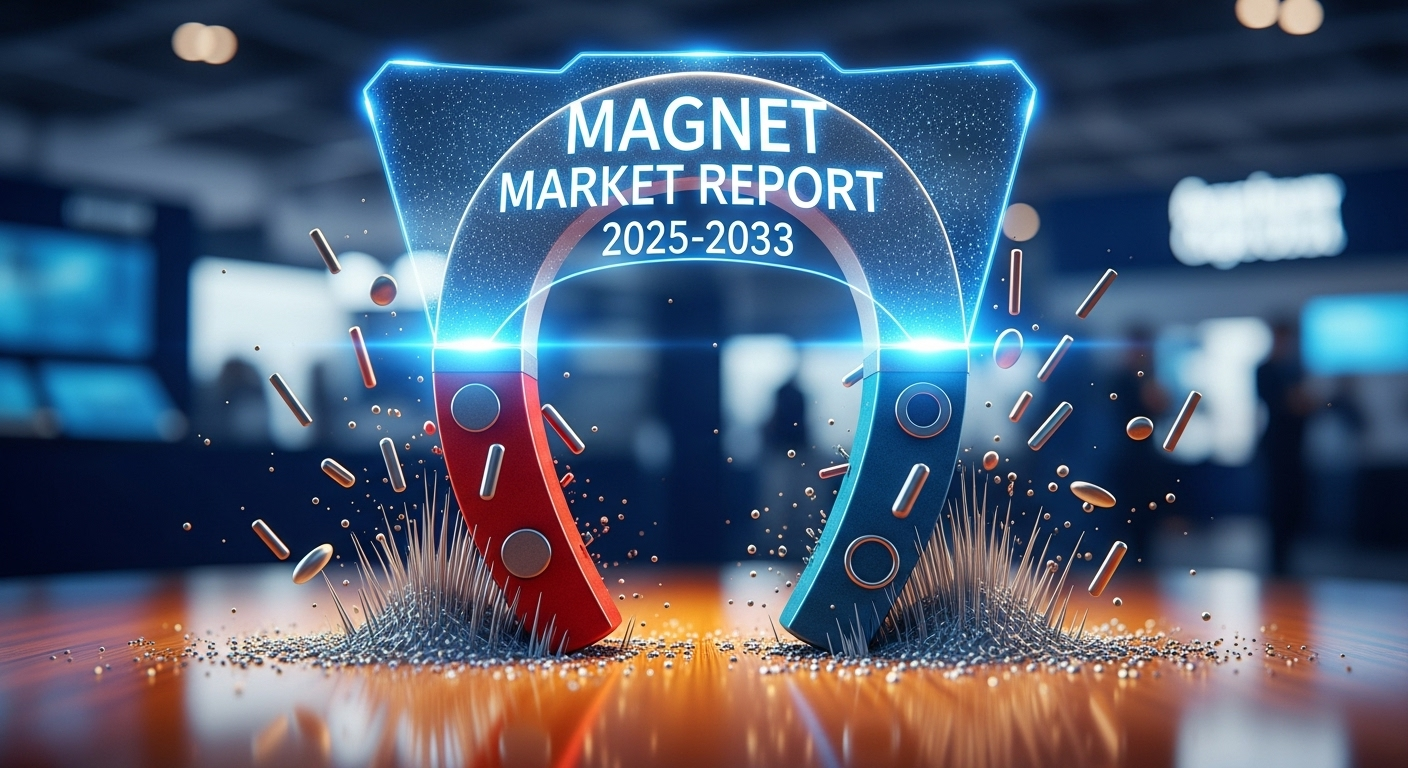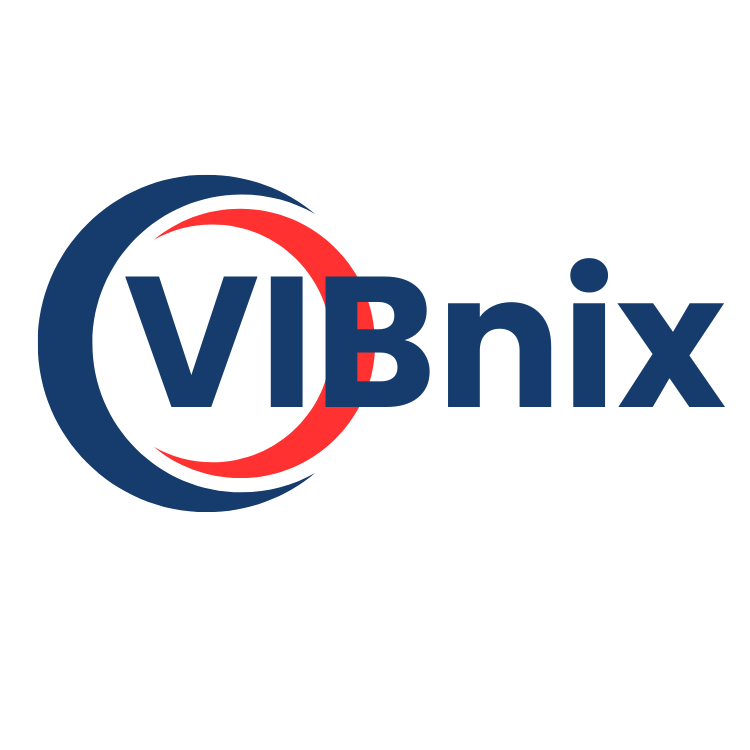Magnet Market Analysis, Key Players, Growth, and Forecast 2025-2033

Market Overview:
The magnet market is experiencing rapid growth, driven by surge in electric vehicle production, rising demand in renewable energy, and growth in industrial automation and robotics. According to IMARC Group’s latest research publication, “Magnet Market: Global Industry Trends, Share, Size, Growth, Opportunity and Forecast 2025-2033”, The global magnet market size reached USD 41.75 Billion in 2024. Looking forward, IMARC Group expects the market to reach USD 58.7 Billion by 2033, exhibiting a growth rate (CAGR) of 3.82% during 2025-2033.
This detailed analysis primarily encompasses industry size, business trends, market share, key growth factors, and regional forecasts. The report offers a comprehensive overview and integrates research findings, market assessments, and data from different sources. It also includes pivotal market dynamics like drivers and challenges, while also highlighting growth opportunities, financial insights, technological improvements, emerging trends, and innovations. Besides this, the report provides regional market evaluation, along with a competitive landscape analysis.
Download a sample PDF of this report: https://www.imarcgroup.com/magnet-market/requestsample
Our report includes:
- Market Dynamics
- Market Trends and Market Outlook
- Competitive Analysis
- Industry Segmentation
- Strategic Recommendations
Growth Factors in the Magnet Market
- Surge in Electric Vehicle Production
The global push for electric vehicles (EVs) is a major driver for the magnet industry, as magnets are critical for EV motors and sensors. Neodymium iron boron (NdFeB) magnets, known for their strength, are used in over 90% of EV motors, with a typical electric car requiring about 2-3 kg of these magnets. Government initiatives, like the U.S.’s $500 billion clean energy investment, boost EV production, increasing magnet demand. Companies like Hitachi Metals are ramping up production to meet this need, with new facilities in Asia to support EV growth. This surge is fueled by global efforts to cut carbon emissions, making magnets essential for sustainable transportation. The automotive sector’s reliance on high-performance magnets continues to drive market expansion.
- Rising Demand in Renewable Energy
Magnets are vital in renewable energy, especially in wind turbines and solar inverters, driving industry growth. Permanent magnets, particularly NdFeB, are used in wind turbine generators, with each turbine requiring around 200-700 kg of magnets. Global clean energy investments, exceeding $2 trillion, support this demand, with countries like China adding significant wind power capacity. Companies like Lynas Rare Earths are expanding production to supply these magnets, focusing on sustainable sourcing. The shift to clean energy, backed by government policies like the EU’s Green Deal, emphasizes energy-efficient technologies, increasing the need for magnets in power generation. This focus on sustainability and renewable energy infrastructure continues to propel the magnet market forward.
- Growth in Industrial Automation and Robotics
The rise of industrial automation and robotics is boosting magnet demand, as they’re key components in motors, sensors, and actuators. The International Federation of Robotics reported over 517,000 new industrial robots installed globally, with magnets enabling precise motion control. In the U.S., robot installations hit 34,987 units, a 14% increase, driving magnet use in manufacturing and logistics. Companies like TDK are expanding production, with new facilities in Japan to meet this demand. Government support, such as the CHIPS Act, encourages automation in semiconductor production, further increasing magnet needs. This trend toward Industry 4.0 and smart manufacturing relies on magnets for efficiency, making them critical for modern industrial applications.
Key Trends in the Magnet Market
- Development of Rare-Earth-Free Magnets
The magnet industry is seeing a shift toward rare-earth-free magnets to address supply chain and environmental concerns. Hitachi Metals recently developed RE-free magnets with magnetic properties comparable to traditional NdFeB magnets, reducing reliance on scarce materials like neodymium. These magnets are gaining traction in automotive and electronics applications, where sustainability is a priority. For instance, over 60% of magnet manufacturers are investing in R&D for eco-friendly alternatives. This trend is driven by geopolitical issues affecting rare earth supplies, particularly from China, which controls over 55% of global production. Companies are focusing on sustainable manufacturing, aligning with global environmental goals and creating new market opportunities.
- Miniaturization for Consumer Electronics
The trend toward smaller, more efficient magnets is growing due to demand in consumer electronics like smartphones and wearables. Magnets are used in micro-motors and sensors, with the average smartphone containing about 0.1-0.2 grams of NdFeB magnets. Companies like Shin-Etsu Chemical are developing compact, high-performance magnets to fit increasingly tiny devices. The global electronics market, with millions of devices shipped annually, drives this need. For example, India saw a 37.7% increase in PC and laptop shipments, boosting magnet demand. This focus on miniaturization ensures magnets deliver strong performance in smaller packages, supporting innovation in portable electronics and IoT devices.
- Integration in Advanced Medical Applications
Magnets are increasingly used in medical applications, particularly in MRI machines and diagnostic tools. A single MRI scanner uses around 1,000-2,000 kg of magnets, with demand growing as healthcare investments rise. Companies like Electron Energy Corporation are supplying high-quality magnets for medical equipment, supporting innovations like nano magnets for targeted diagnostics. The U.S. alone has over 40,000 MRI machines, each relying on powerful magnets. This trend is fueled by the need for precise imaging and minimally invasive procedures, with magnets enabling advanced medical technologies. As healthcare systems expand globally, the magnet market is poised for growth in this critical sector.
Our report provides a deep dive into the magnet market analysis, outlining the current trends, underlying market demand, and growth trajectories.
Leading Companies Operating in the Global Magnet Industry:
- Adams Magnetic Products, LLC
- Arnold Magnetic Technologies
- BGRIMM Technology Group
- Daido Kogyo Co., Ltd.
- DMEGC
- Electron Energy Corporation
- Goudsmit Magnetics
- Lynas Rare Earths Ltd
- Magnequench International, LLC
- Proterial, Ltd
- Shin-Etsu Chemical Co., Ltd.
- TDK Corporation
- Yantai Dongxing Magnetic Materials Inc
Magnet Market Report Segmentation:
By Magnet Type:
- Ferrite
- Neodymium Iron Boron (NdFeB)
- Aluminium Nickel Cobalt (AlNiCo)
- Samarium Cobalt (SmCo)
The permanent magnet market is segmented by magnet type, with NdFeB dominating due to its superior strength, followed by ferrite for cost-effectiveness, AlNiCo for temperature stability, and SmCo for extreme conditions.
By Application:
- Computer Hard Disk Drives (HDD), CD, DVD
- Hybrid Electric Vehicles
- Electric Bicycles
- Heating, Ventilating and Air Conditioners (HVAC)
- Wind Turbines
- Other Applications
- Transducers and Loudspeakers
- Magnetic Separation Equipment and Sorters
- Magnetic Resonance Imaging (MRI)
- Magnetic Braking Systems
- Magnetically Levitated Transportation Systems
- Medicine and Health
- Credit Cards and other ID Cards
- Traveling Waves Tubes (TWT)
- Advertising and Promotional Products
- Magnetic Refrigeration system
- Nanotechnology
- Military and Aerospace
- Energy Storage Systems
The permanent magnet market is dominated by computer hard disk drives (HDD), CD, DVD applications, with significant growth in hybrid/electric vehicles, e-bikes, HVAC, and wind turbines, driven by demand for efficient, reliable, and high-performance magnetic solutions.
Regional Insights:
- China
- Japan
- USA
- Europe
- Other Regions
China leads the permanent magnet market due to its manufacturing capacity and rare earth dominance, while Japan, the USA, and Europe emphasize technological innovation and sustainable applications.
Note: If you require specific details, data, or insights that are not currently included in the scope of this report, we are happy to accommodate your request. As part of our customization service, we will gather and provide the additional information you need, tailored to your specific requirements. Please let us know your exact needs, and we will ensure the report is updated accordingly to meet your expectations.
About Us:
IMARC Group is a global management consulting firm that helps the world’s most ambitious changemakers to create a lasting impact. The company provide a comprehensive suite of market entry and expansion services. IMARC offerings include thorough market assessment, feasibility studies, company incorporation assistance, factory setup support, regulatory approvals and licensing navigation, branding, marketing and sales strategies, competitive landscape and benchmarking analyses, pricing and cost research, and procurement research.
Contact Us:
IMARC Group
134 N 4th St. Brooklyn, NY 11249, USA
Email: sales@imarcgroup.com
Tel No:(D) +91 120 433 0800
United States: +1-201971-6302
- Vibnix Blog
- Politics
- News
- Liberia News
- Entertainment
- Technology
- Formazione
- Art
- Causes
- Crafts
- Dance
- Drinks
- Film
- Fitness
- Food
- Giochi
- Gardening
- Health
- Home
- Literature
- Music
- Networking
- Altre informazioni
- Party
- Religion
- Shopping
- Sports
- Theater
- Wellness



